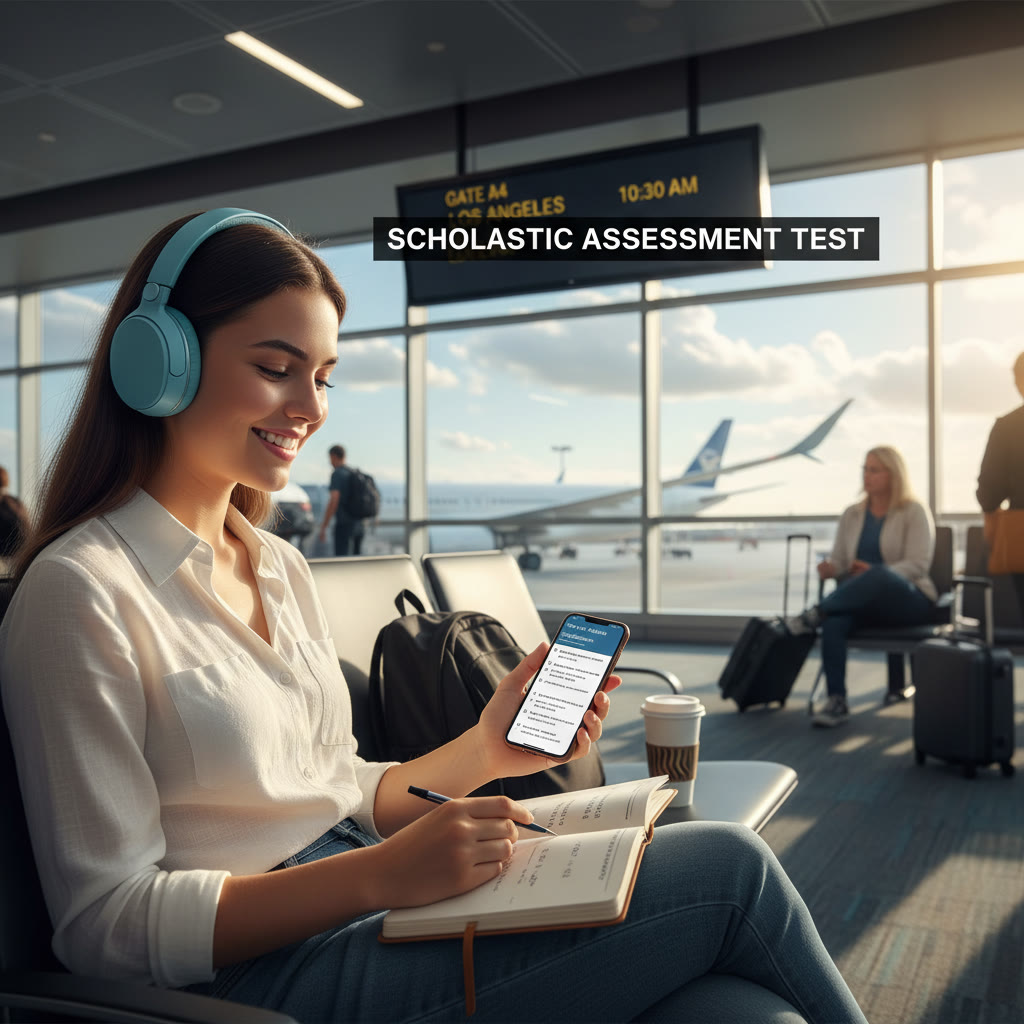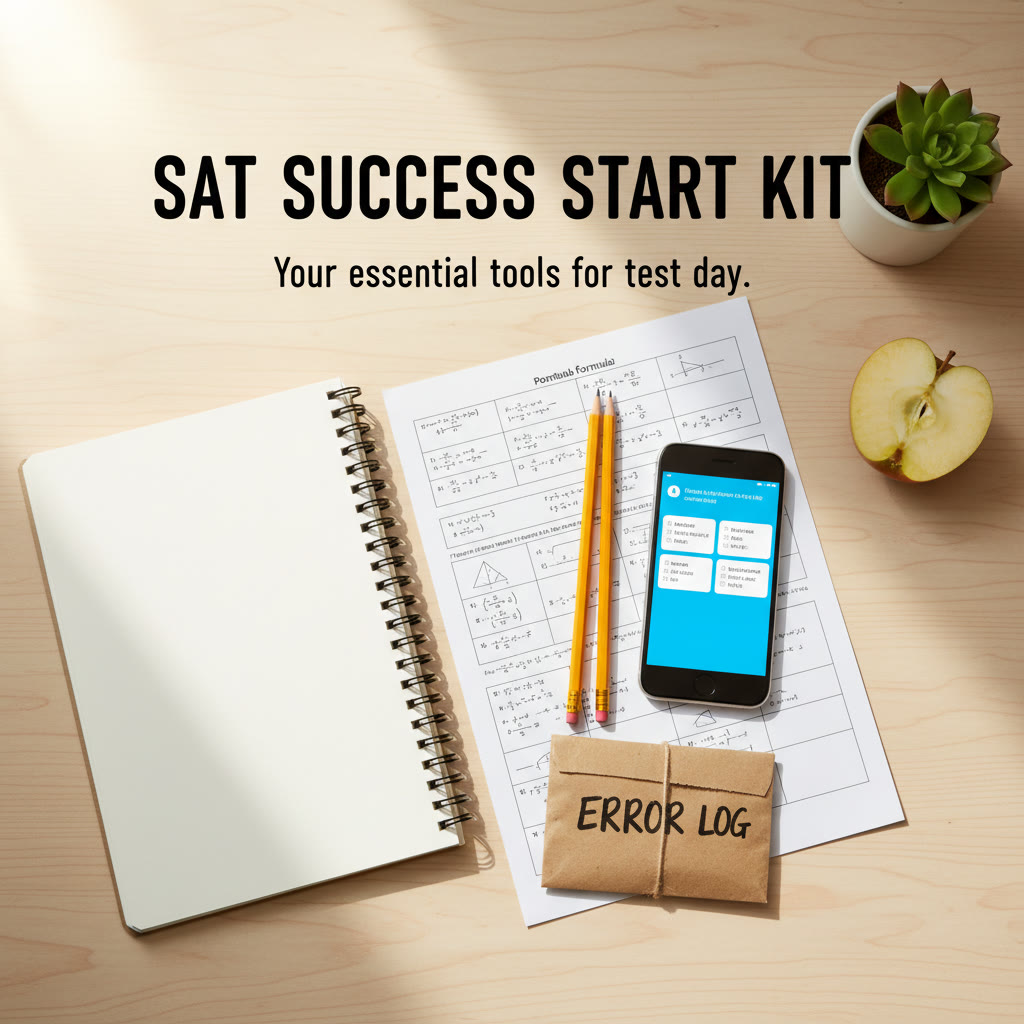When moving becomes part of your life: a calm approach to SAT prep
Moving is an uprooting of routines, friendships and sometimes school systems. If your family relocates a lot — because of the military, a diplomatic job, athletics, or simply life’s curveballs — keeping SAT preparation steady can feel like trying to study on a rocking boat. But it’s absolutely doable. The trick is to make your study system mobile, resilient, and centered on the fundamentals that never change.
This guide is written for students who need strategies that travel: easy-to-carry study habits, flexible schedules, practical tips for practice testing, and the emotional mechanics of staying motivated. I’ll share sample plans, a table you can use to build a portable study kit, and realistic ways to keep momentum through multiple moves. Where it fits naturally, I’ll note how Sparkl’s personalized tutoring — 1-on-1 guidance, tailored study plans, expert tutors and AI-driven insights — can be used as a reliable anchor when everything else is shifting.
Why moving makes SAT prep tricky (and what you can control)
Relocation interferes with routines, access to quiet spaces, and, sometimes, continuity of schooling. You might miss a teacher who was giving great support, or your new home might not have a reliable test center nearby. But there are constants: the SAT always tests the same core skills — reading comprehension, command of evidence, grammar and usage, algebra and problem solving. If you focus on portable methods that strengthen those core skills, you’ll be in good shape no matter how often the zip code changes.
- Challenge: disrupted routine. Control: create a tiny, repeatable study ritual.
- Challenge: lost resources. Control: move to cloud-first, digital materials and a small physical kit.
- Challenge: administrative confusion (schools, test registration). Control: build a document checklist and a calendar alarm system.
Start with mindset and planning
Adopt a flexible, realistic mindset
Moving frequently rewards people who are adaptable. Build a mindset that expects interruptions but refuses to let them derail you. Think of your study plan as a living document that flexes when life flexes. Short goals beat long, perfect ones when you’re on the move: instead of promising yourself 20-hour study weeks during a cross-country move, commit to 30–60 minutes a day of focused practice.
Map your timeline, then make it mobile
Start by setting a target test date and then work backward. But add margins: plan for two weeks of reduced study around each move. Use a simple shared calendar (on your phone) to pin test dates, registration deadlines, and practice-test days. When you move, update that calendar once and keep it the single source of truth.
Practical strategies that travel well
1. Build a portable study system
Make your SAT kit cloud-first and low-friction. That means most materials live online, synced to your phone and laptop. But don’t rely solely on connectivity — keep a small physical kit for airports or unreliable Wi-Fi.
- Digital backbone: cloud storage with practice tests, notes, and flashcard decks that sync across devices.
- Physical kit: a notebook, 1–2 pencils, a timer (phone works), a printed recent practice test, and a list of key formulas and grammar rules.
- Apps: one practice-test app for timed sections, one flashcard app, and a simple note app for errors and patterns.
Example: when I say “portable,” I mean you should be able to study a reliable 45-minute block in a car on a long drive, a hotel lobby, or a quiet corner of a new school library.
2. Create a flexible study plan
When your address line changes often, your study plan should scale. Here are three templates you can adapt quickly depending on how many weeks you have before the test. Use the table below to compare them at a glance.
| Timeline | Weekly Hours | Focus | Sample Week |
|---|---|---|---|
| 12 weeks | 6–8 | Foundations, timed sections, 1 full practice test every 2 weeks | 3 longer sessions (1.5 hr), 3 short sessions (45 min), 1 practice test day |
| 8 weeks | 8–10 | Content review, weekly practice test, targeted drills | 4 medium sessions (1 hr), 3 short sessions, 1 full practice test |
| 4 weeks | 12–16 | Rapid review, lots of timed practice, error log | Daily sessions (1–2 hr), 2 full practice tests, intensive error analysis |
Save these plans as templates in your cloud folder. When you move, open the template that matches your current time frame and tweak it for the disruption. If you expect a busy week, switch to micro-lessons and make practice-test recovery a priority afterward.
3. Use short, high-quality practice sessions
Micro-sessions travel well. A 25–40 minute block of deliberate practice beats unfocused hours. Try the following structure when you’re pressed for time:
- Practice sprint (25–40 minutes): timed reading passage or a math drill.
- Quick review (10–15 minutes): log mistakes in a single error notebook.
- Mini-goal for the next session (5 minutes): one technique to apply next time.
These short cycles are resilient through travel days and help you keep continuous, measurable progress.
4. Stay on top of test logistics
Administrative tasks don’t have to be chaotic. Create a “moving checklist” for SAT logistics and keep scanned copies of essential documents in your cloud storage: photo ID, proof of school enrollment if needed, and registration confirmations. Set calendar alerts for registration deadlines and test-day reminders. If your move changes your test center, update your registration as soon as you can. If accommodations apply, keep official documentation handy and confirm arrangements early — moving can add extra paperwork, so start this early.
5. Manage study spaces and routines
When you arrive somewhere new, spend the first day scouting two study spaces: a quiet indoor option and a backup (like a library or café) if home is noisy. Establish a 10-minute “study setup” ritual: clear a spot, plug in your devices, open your study calendar, and make a cup of something comforting. Rituals are small anchors that reduce friction, which matters more when the rest of life feels uncertain.
Study techniques that fit into a suitcase
Reading and Evidence-Based Reading & Writing
Active reading is portable. Practice with short, diverse passages and build a habit of annotating the main idea, author attitude, and structure. When you don’t have a printer, use your cloud notes to jot a three-line summary after each passage: main idea, strongest piece of evidence, and one question you got wrong. Over time you’ll see patterns — for example, certain question stems that trip you up — and you can target those in a quick review session.
Math — practice both modes
The SAT alternates calculator and no-calculator sections. Even if you travel with your calculator, spend short sessions practising mental math and simple algebraic manipulation without it. Carry a one-page cheatsheet of formulas and a small problem set that you can tackle in a waiting room. For mobility, prioritize problem types rather than chapters: linear equations, ratios, functions, and data interpretation are the backbone and travel-friendly to practice.
Writing and Language
Grammar and usage are ideal for micro-practice. Keep a list of commonly tested grammar rules and run five-minute drills daily. Editing practice is portable: pick one short paragraph and make all necessary corrections, then log the type of error. Over a few moves, your error log becomes a tiny portable tutor that tells you what to attack next.
Practice tests and time management on the move
Finding time and place for full practice tests
Full practice tests are essential, but they require space and time. If a long, quiet block isn’t available at home, consider these alternatives:
- Reserve a local library study room for a morning.
- Take a practice test early in a café when traffic is low, and use headphones to minimize distractions.
- Split the test across two consecutive days only if absolutely necessary, but prefer single-day simulations when possible.
Whatever you choose, simulate test conditions: timed sections, no interruptions, and realistic breaks. Then do a calm, structured review focusing on patterns rather than every single mistake.
Simulating test day in small or shared spaces
If you’re staying in a small or loud place, use creative site management: post a polite note on the door announcing your test simulation, schedule it when most housemates are out, or use noise-cancelling headphones and a white-noise app. These small logistics help keep the experience realistic, which is what builds stamina.
Emotional resilience and keeping momentum
Dealing with disruptions and lost weeks
Moving can cause weeks of low productivity. Accept that, then return with a forgiving, efficient plan: spend the first few sessions assessing your current level with a short diagnostic, then pick one weak area to improve in the next two weeks. Momentum is built through small wins: a streak of 5–7 short sessions is a stronger basis than one marathon attempt after a long break.
Turning relocation into a strength
Moving often builds adaptability, a skill colleges value. You can frame your experience positively: your ability to juggle schedules, build new routines quickly, and study independently demonstrates resilience and executive function. Use that in your essays and interviews. Also, different places offer different practice opportunities — sidewalk conversations to practice reading inference, new math project ideas in a different curriculum — so collect these as study fodder.
How tutoring can help when everything else changes
Consistent coaching even when your address changes
Frequent movers benefit particularly from consistent tutoring. A single tutor or tutoring service that travels with you digitally becomes a steadying factor. Sparkl’s personalized tutoring is an example of how tailored support can anchor your prep: expert tutors provide 1-on-1 guidance, create study plans that fit your changing calendar, and use AI-driven insights to focus on the exact skills you need most. When you can’t rely on local school resources, a consistent tutor can replicate that continuity across time zones.
What to ask for in tutoring when you move
- A portable curriculum that focuses on essentials and adapts weekly to your circumstances.
- Short, goal-oriented sessions you can take anywhere.
- Access to diagnostic tools and practice tests on demand.
- Regular check-ins that re-anchor your study calendar after each move.
These elements reduce the cognitive load of constant change and keep progress measurable.
Quick checklists and a sample packing table
Moving checklist for SAT prep
- Cloud folder with all practice tests, score reports, and study notes.
- Physical kit: notebook, pencils, list of formulas, a printed recent practice test.
- Calendar with test date, registration deadlines, and two practice-test windows.
- Error log and one target skill for each week.
- Contact info for your tutor and a short plan for “re-entry” after a move.
Sample packing table: SAT carry-on study kit
| Item | Why it’s useful | How to use it on the move |
|---|---|---|
| Notebook | Central error log and quick drills | Write one page per day: mistakes and next steps |
| Printed one-page formula/grammar sheet | Quick reference when you don’t want to open apps | Review during short waits—2 minutes per rule |
| Phone with flashcards | Micro-practice anywhere | Daily 10-minute flashcard session while commuting |
| Recent practice test PDF | Diagnostic and review material | Run section sprints and log errors |


Putting it all together: a short example
Meet Maya. Her family moves every nine months for work. With a year until her test, she made a cloud folder, packed a small physical kit, and set a 12-week flexible plan in her shared calendar. When her move fell two months before the test, she tapped her tutor for three focused 45-minute sessions per week and switched to shorter daily drills. She took two practice tests in local libraries and used the two-week reduced-intensity buffer around the move. In her error log she noticed she missed the same type of sentence-logic question; she and her tutor used Sparkl’s diagnostic insights to zoom in on that topic, and she improved within weeks. Maya didn’t study perfectly, but she stayed adaptive, accountable, and calm — and that steady progress is what would show up on test day.
Final thoughts: steady habits beat perfect plans
Moving frequently is a challenge, but it also teaches a skill that many students never get: how to build and maintain momentum in the middle of change. Create a portable study system, use short, focused sessions, prioritize practice tests in realistic conditions, and keep a single calendar and document folder you update at each move. If you need consistent, personalized guidance while you relocate, consider tutoring that travels with you digitally. Sparkl’s personalized tutoring — from 1-on-1 guidance to tailored study plans and AI-driven insights — can be a reliable partner when local resources fluctuate.
Above all, be kind to yourself. Relocation is hard. If you miss a week, you can rebuild. Small wins — a streak of short daily sessions, one corrected mistake type, a better timed section — compound into real improvement. With a portable plan and a little flexibility, you can make your SAT prep as mobile and resilient as you are.
Good luck — and remember: the next place you land is just another study spot. Bring your kit, open your calendar, and keep going.















No Comments
Leave a comment Cancel